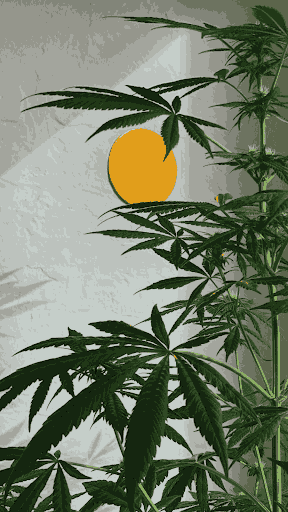Terpenes: Botanical and Cannabis derived
Terpenes, the aromatic compounds found abundantly in plants, play a crucial role in their biological functions. They contribute to the distinct scent and flavor of various botanical species, including the cannabis plant. By understanding the complex world of terpenes, we can gain valuable insights into their potential therapeutic, medicinal, and recreational benefits.
Botanical terpenes are organic hydrocarbons found in an array of plants, such as lavender, citrus fruits, and pine trees. These compounds are responsible for the unique scent and flavors that define these natural specimens. Beyond their olfactory allure, botanical terpenes have been studied for their potential therapeutic properties, including anti-inflammatory, antimicrobial, and antifungal effects.
Similarly, the cannabis plant is renowned for its terpene profile, which contributes to its distinct aroma and flavor. Cannabis terpenes, however, offer more than just sensory appeal. They are believed to work in synergy with the plant’s cannabinoids, such as THC and CBD, to produce the entourage effect, which enhances the overall therapeutic potential of the plant.

Botanical terpenes, as the name proposes, are terpenes derived from a wide exhibit of non-cannabis plants. These natural compounds are bountiful in different botanical sources, including fruits, herbs, and flowers.
The extraction of botanical terpenes essentially includes steam distillation or cold pressing. These techniques save the volatile idea of terpenes, guaranteeing their purity and integrity.
Botanical terpenes track down applications in a different scope of products. They are utilized in aromatherapy, perfumery, cosmetics, and even in the food and beverage industry for flavoring and scent improvement.
Features & Benefits of Botanical or Plant-Derived Terpenes

- Aromatic Compounds: As a subset of plant-derived terpenes, botanical terpenes comprise a rich and various gathering of aromatic compounds sourced from a broad scope of non-cannabis plants. These terpenes stand out because of their flexibility, offering an expansive range of dazzling aromas and flavors that can be finely tuned to suit specific product prerequisites.
- Wide Variety of Sources: One of the critical benefits of plant-derived terpenes is the sheer variety of plant sources from which they can be derived. From lavender’s relieving fragrance to citrus fruits’ fiery scent, botanical terpenes include a wide cluster of aromatic profiles. This variety empowers makers to saddle the unique and enchanting scents tracked down in nature, considering a boundless scope of imaginative conceivable outcomes.
Customization: Moreover, the adaptability of plant-derived terpenes stretches out to their capacity to be redone to meet specific product needs. This flexibility considers the improvement of products with exact, tailored aromas and flavors, whether in the domains of perfumery, cosmetics, or culinary arts. Via cautiously choosing and mixing botanical terpenes, manufacturers can make signature aromas and tastes that resound with purchasers, improving the allure of their contributions.
Discovering the Cannabis Terpenes

Cannabis terpenes, as the name implies, are extricated from the cannabis plant. They are answerable for the particular aromas and flavors related to various cannabis strains.
Cannabis terpenes benefits can be extricated utilizing different strategies, including steam distillation, hydrocarbon extraction, and solventless procedures. The extraction cycle is often strain-specific, as it expects to catch the unique terpene profile of the particular cannabis assortment.
The essential utilization of cannabis terpenes is in cannabis products, like concentrates, oils, and edibles. They add to the entourage effect, upgrading the general properties of the plant.
Features & Benefits of Cannabis Terpenes

Cannabis terpenes benefits have prompted their rising notoriety:
- Aroma and Flavor: Cannabis terpenes benefits are critical in deciding the aroma and flavor of various cannabis strains, making them more interesting to shoppers. The aromatic bunch of a cannabis strain is a complex ensemble made out of different terpenes, each contributing its unique note to the, generally speaking, olfactory experience.
- Restorative Properties: Cannabis terpenes add to the therapeutic capability of the plant through the company effect, an idea that features the synergistic connection between cannabinoids and terpenes. This phenomenon upgrades the therapeutic viability of cannabis products by advancing an all-encompassing and exhaustive way to deal with well-being.
Most Common Terpenes Found in Cannabis Plants

Some of the predominant terpenes include:
- Pinene: Found in pine needles, rosemary, and basil, Pinene is one of the most commonly found terpenes in the world.
- Myrcene: Myrcene is a terpene with an earthy, peppery, and slightly spicy aroma. It is found in high concentrations in mangoes, guavas, hops, and basil leaves.
- Linalool: Linalool is the most commonly found terpene in lavender. It has a slightly citrus aroma of lavender.

- Limonene: Limonene is a natural terpene found in citrus fruits’ peels like lemons and oranges. It has energizing effects.
- Beta-caryophyllene: Beta-caryophyllene is famous as peppery terpene. It has a warm, spicy aroma similar to cloves and black pepper. Being a more complex terpene than other terpenes found in cannabis plants.
- Humulene: Humulene has an earthy, woody, and slightly spicy aroma and is found in hops, sage, and ginseng.

Full spectrum hemp refers to a type of hemp extract that contains not only CBD (cannabidiol), but also numerous other cannabinoids, terpenes, and beneficial plant compounds. This combination is believed to create a synergistic effect, known as the entourage effect, whereby the restorative potential of each compound is enhanced when working together.
